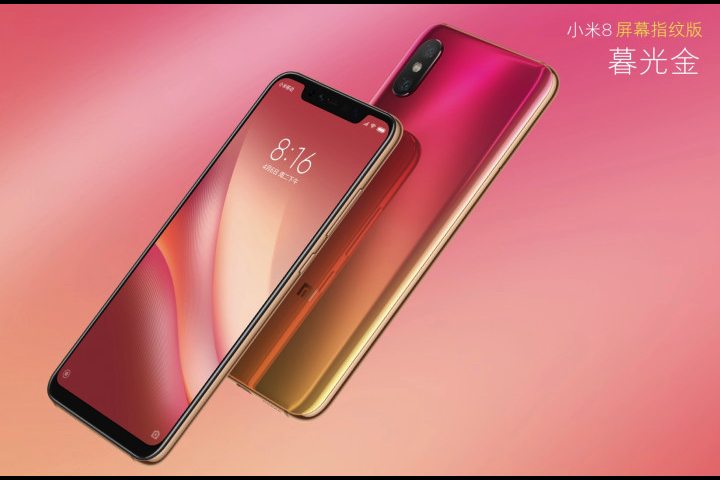
Xiaomi has launched two new smartphones, the Mi 8 Pro and the Mi 8 Lite, which join several other members of the Mi 8 family that were announced in June. These two new phones will get a global release in the near future, and it’s the Mi 8 Pro that will attract the most attention. Let’s take a look at that one first.
The Mi 8 Pro’s specification is very similar to the existing Xiaomi Mi 8, while adding some of the key tech seen in the Xiaomi Mi 8 Explorer Edition, which has the unfortunate side effect of making it look even more like the Apple iPhone XS. The main difference between the Mi 8 and the Mi 8 Pro is the addition of an in-display fingerprint sensor, which we’ve seen on several phones already, including the Vivo Nex S.
Xiaomi has abandoned the 3D face identification system on the front for a more conventional infrared system, but has not chosen to add a second fingerprint sensor for backup, like Huawei and Porsche Design did with the Mate RS. The face-unlock cam and the 20-megapixel selfie camera live in a notch above the 6.21-inch OLED screen, which has a 2248 x 1080 pixel resolution. Both rear cameras have 12 megapixels, and the phone has a Snapdragon 845 processor and either 6GB or 8GB of RAM.
Perhaps the best news, if you liked the look of the Mi 8 Explorer, is Xiaomi will sell the Mi 8 Pro with the translucent rear panel. Whether what you’re seeing behind it is actually factual — there are question marks over component placement, and the overall neatness of the presentation — is irrelevant.

We’ve seen the Mi 8 Explorer, and as you can see in the photo here, it looks fantastic. If the Mi 8 Pro looks as good, it’ll be the model to buy. It also comes in colorful blue and orangey red, each with a fetching gradient, making them very reminiscent of the best Huawei P20 Pro colors.
The Xiaomi Mi 8 Lite is a midrange phone with a Snapdragon 660 chip, either 4GB or 6GB of RAM, a monster 24-megapixel selfie camera, and a lesser 12 megapixel/5 megapixel lens setup on the back. A traditional fingerprint sensor is also found on the rear panel, and the screen measures 6.26 inches with a 2280 x 1080 pixel resolution. The phone will also come in some bright gradient-style colors, as well as a more subdued gray.

To confuse everyone just a little more, the new Mi 8 Pro and Mi 8 Lite join not only the Mi 8 and Mi 8 Explorer edition, but also a Mi 8 SE which has a smaller 5.88-inch screen, and a Snapdragon 710 processor. An international release for the existing Mi 8 phones is unlikely, however, and according to Xiaomi’s senior vice president Wang Xiang, the Pro and Lite will see a global release. Remember though, anyone wanting one in the U.S. will still have to import one.
Otherwise, expect to see the Mi 8 Pro and Lite on sale in China and Xiaomi’s growing international and European markets by the end of September. Prices are shockingly reasonable, with even the 8GB/128GB Mi 8 Pro coming in at around $525 when directly converted over from its Chinese price. The cheaper Mi 8 Lite tops out at around $290 for the 6GB/128GB version.


